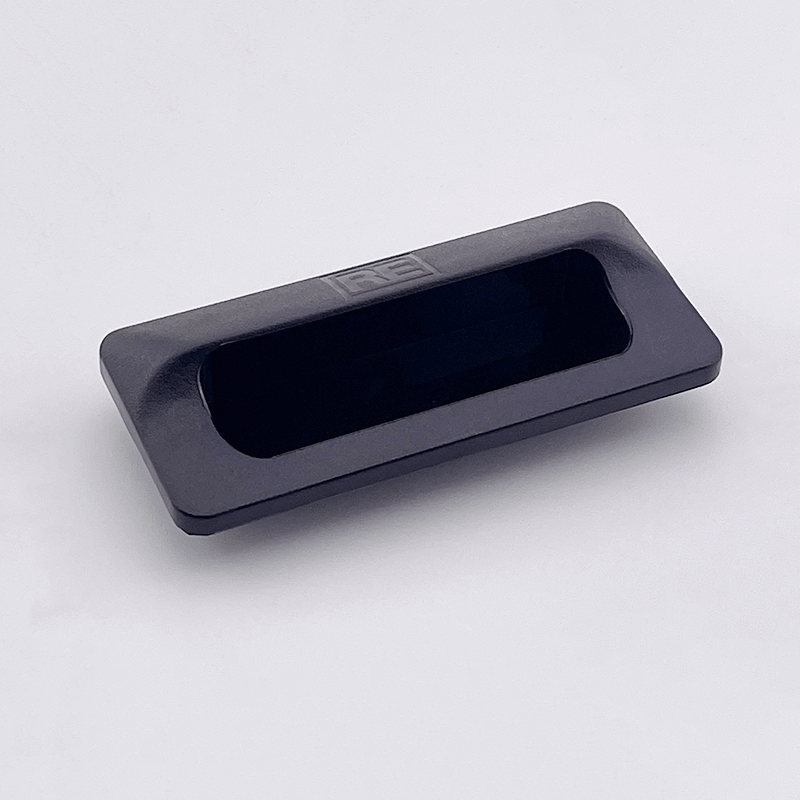In industrial settings, operator safety and control are paramount, especially when working with powerful machinery. Safety handles for machinery play a crucial role in protecting users, providing stability, and preventing accidents. These equipment handles, which serve as essential touchpoints for operating and maneuvering equipment, are designed to be durable, ergonomic, and secure, offering peace of mind in high-stakes environments.
What Are Safety Handles for Machinery?
Safety handles are specialized handles attached to machinery to improve user grip, stability, and control. They are often found on heavy equipment and high-powered tools where secure handling is essential to minimize risks of accidents. Safety handles are not only crafted for ergonomic comfort but are also built to withstand harsh industrial conditions, making them indispensable for various industries such as manufacturing, construction, automotive, and agriculture.
Importance of Safety Handles in Machinery
Safety handles serve a dual purpose: they provide a reliable grip for the operator and act as a barrier to potential hazards. Properly designed safety handles help operators maintain control of equipment during operation, even in challenging or slippery conditions, reducing the likelihood of accidents caused by loss of control. Their durability and positioning also reduce physical strain on users, lowering the risk of fatigue-related injuries.
Types of Safety Handles for Machinery
Fixed Handles: Fixed safety handles are permanently attached to the machinery at critical points where operators require stability, such as near control panels, levers, or load-bearing parts.
Rotating or Adjustable Handles: Adjustable handles can be rotated or repositioned, providing flexibility for tasks that require movement. These handles are beneficial in applications where multiple positioning angles are necessary, such as in milling or cutting operations.
Pistol-Grip Handles: With a design shaped to mimic a pistol grip, these handles are ideal for machinery requiring precision control and easy maneuverability. The pistol-grip design allows operators to hold the handle with a firm grip, especially during tasks requiring detailed movement.
Palm Handles: Palm handles are wide and flat, suitable for equipment where pressing or pulling motions are required. These handles allow users to apply pressure comfortably without putting strain on their hands.
Detachable Handles: Detachable safety handles offer flexibility, allowing operators to attach or remove handles as needed. This type is helpful for compact equipment or machinery that requires handles only for specific functions.
Key Features of Effective Safety Handles
Ergonomic Design: Comfort is critical for operators who handle machinery for extended periods. Safety handles are designed to conform to natural hand shapes, providing a comfortable grip and reducing stress on wrists and arms. This ergonomic approach helps minimize fatigue and ensures consistent performance throughout long shifts.
High-Quality Materials: Safety handles must withstand frequent use and exposure to demanding conditions. High-quality materials, such as heavy-duty plastics, stainless steel, or reinforced rubber, ensure that handles remain intact despite harsh environmental exposure. These materials also resist corrosion and wear, extending the handle’s service life.
Non-Slip Surface: Non-slip textures or rubberized coatings on safety handles offer a better grip, even in wet or oily conditions. This feature is essential for environments like factories or workshops, where operators frequently encounter grease, water, or chemicals.
Shock Absorption: To protect operators from the machinery’s vibration, some safety handles are equipped with shock-absorbing components. These handles minimize the impact on the hands and arms, promoting comfort and reducing the risk of vibration-related injuries.
Positioning and Placement: Safety handles must be strategically positioned for maximum effectiveness, allowing operators to quickly stabilize themselves or adjust the machinery’s position without straining or reaching awkwardly.
Benefits of Safety Handles in Industrial Settings
Enhanced Control: Safety handles improve control over machinery, allowing operators to make precise movements. This accuracy is crucial for operations that involve sharp cutting tools, high-speed components, or sensitive materials.
Reduced Injury Risk: By providing a stable and secure grip, safety handles reduce the chances of accidents caused by slipping or unsteady handling. Shock-absorbing handles also help in reducing repetitive strain injuries (RSIs) related to prolonged machinery use.
Improved Productivity: Comfortable, non-slip handles make equipment easier to handle, leading to improved productivity and fewer operator errors. Reduced fatigue also allows workers to perform tasks for extended periods without compromising on quality or safety.
Durability and Cost Efficiency: High-quality safety handles contribute to the overall longevity of the machinery. By protecting operators and enhancing control, these handles minimize costly accidents and machine repairs, resulting in long-term cost efficiency.
Industries Benefiting from Safety Handles
Manufacturing: Safety handles are essential for machinery used in manufacturing, providing control over lathes, presses, and welding equipment.
Construction: For construction machinery like drills, saws, and compactors, safety handles help reduce vibration impact and prevent accidents on rough terrain.
Agriculture: Agricultural equipment such as tractors, plows, and harvesters benefit from reinforced safety handles that withstand continuous outdoor use.
Automotive: In automotive manufacturing, safety handles ensure precision control in tasks such as assembly, painting, and metalworking.
Key Considerations for Choosing Safety Handles
When selecting safety handles for machinery, several factors must be considered:
Application-Specific Requirements: The choice of handle depends on the machinery’s specific use. For example, handles on cutting equipment may prioritize shock absorption, while those on large industrial machines may focus on durability.
Environment: Industrial environments vary widely, and so do their demands on safety handles. Handles in a chemical processing facility might need high chemical resistance, while those in outdoor environments may require rust-proof materials.
Operator Comfort: Ergonomics are critical for safety handles. A handle that fits comfortably in the operator's hand reduces strain and supports prolonged use without fatigue.
Compliance and Standards: Ensure that the safety handles meet industry standards and regulations, as non-compliant equipment may compromise safety and result in regulatory penalties.
Conclusion
Safety handles are an indispensable component of industrial machinery, designed to prioritize operator safety and control. Whether through ergonomic design, high-quality materials, or shock absorption, these handles allow operators to manage equipment with confidence. For industries focused on maximizing productivity and minimizing risk, safety handles are a fundamental investment, ensuring equipment is used efficiently and safely.
